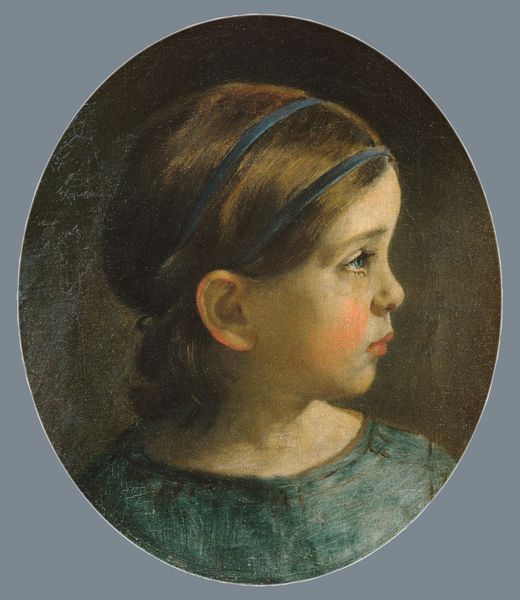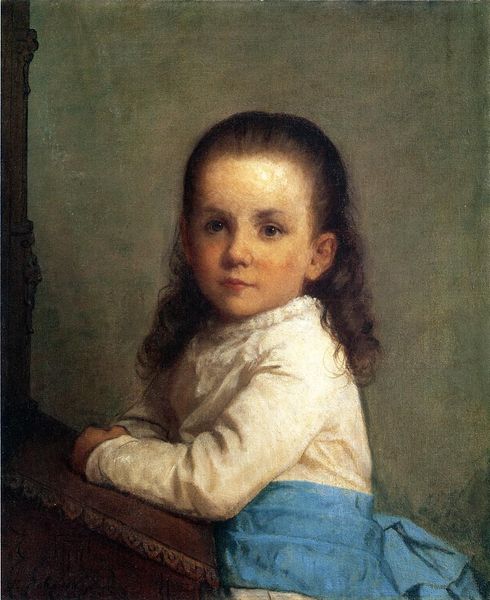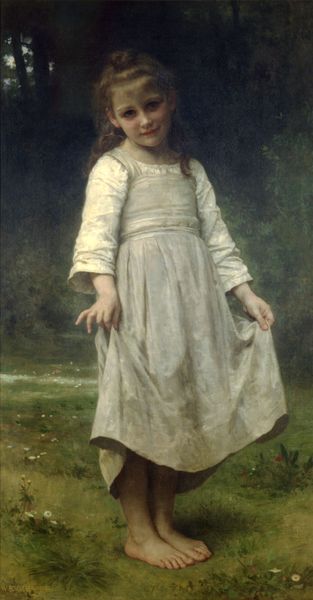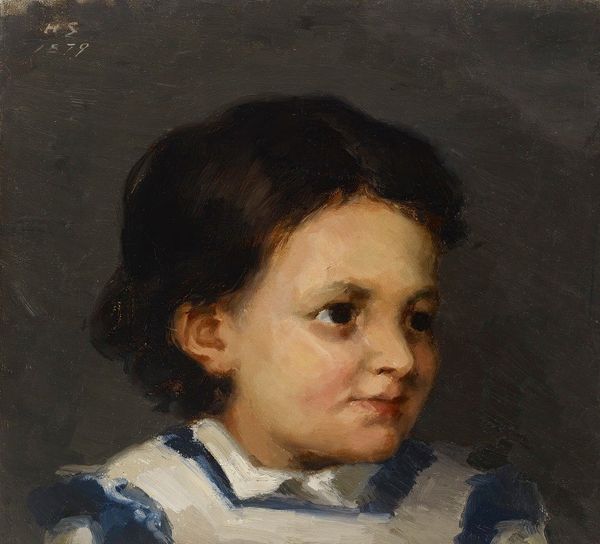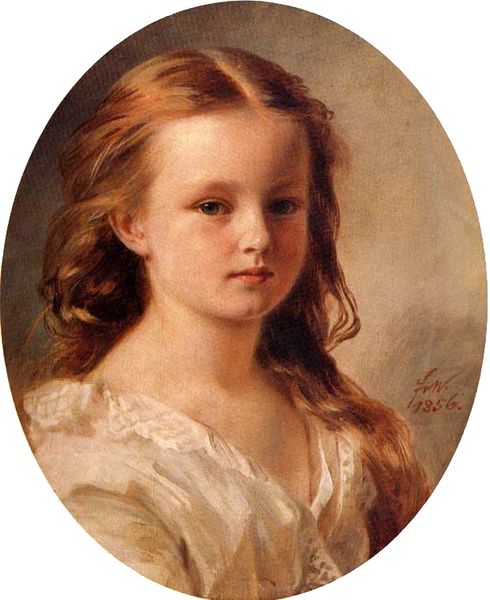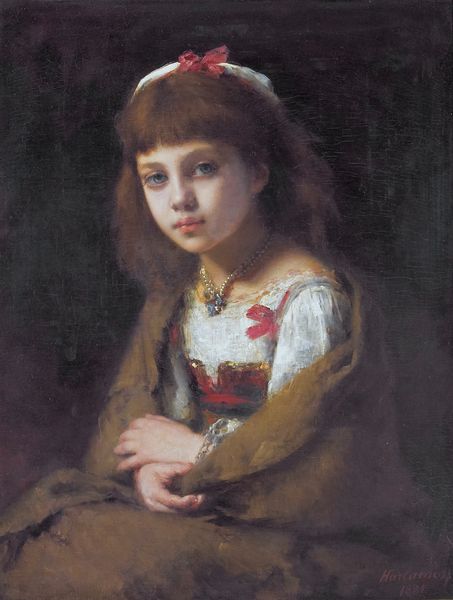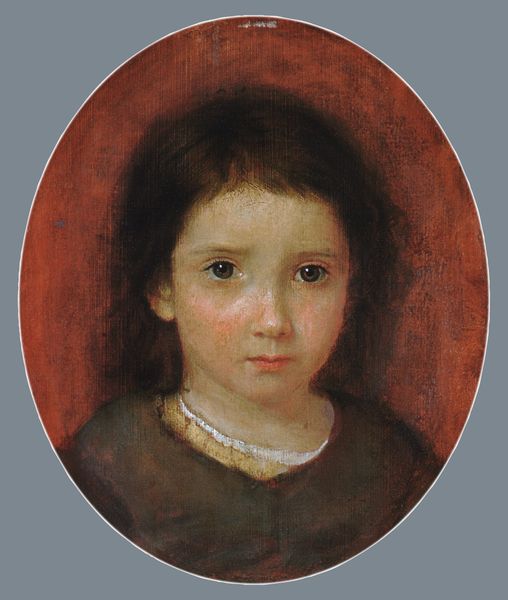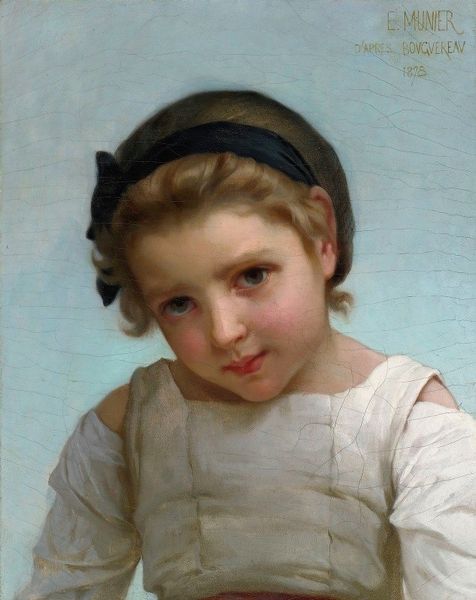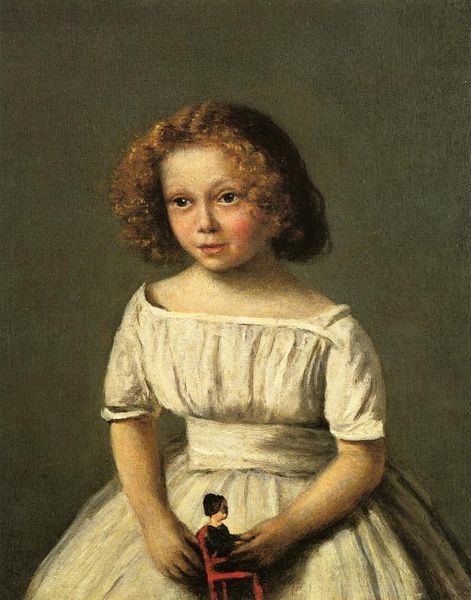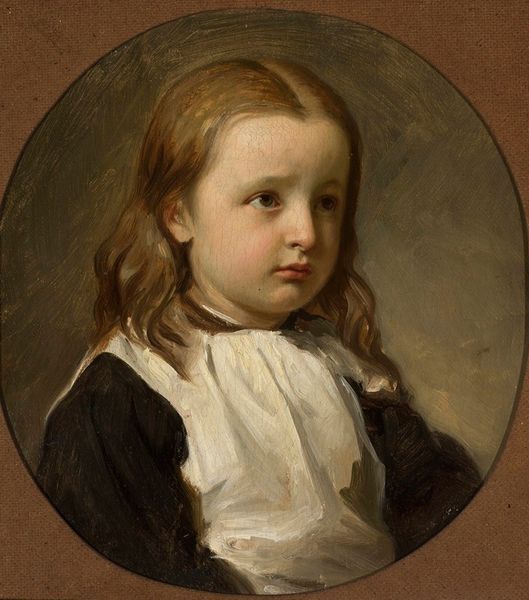
The Eldest Daughter of M. Edouard Delalain (Mme. de Graet) 1850
0:00
0:00
jeanbaptistecamillecorot
Private Collection
painting, oil-paint
#
portrait
#
painting
#
oil-paint
#
romanticism
#
genre-painting
Dimensions: 29.5 x 25.5 cm
Copyright: Public domain
Curator: Looking at this portrait by Camille Corot, created around 1850, I immediately sense a poignant blend of innocence and gravity. The subtle lighting seems to soften the edges, adding an aura of dreaminess, wouldn't you agree? Editor: Yes, but it is an uneasy dream. The subdued palette almost feels oppressive, particularly given that it is a child, the eldest daughter as we are told by the title. The title of the oil-paint piece is *The Eldest Daughter of M. Edouard Delalain (Mme. de Graet)*. Do you think her pale dress contributes to this feeling? Curator: Undoubtedly. Light colors often symbolize purity or innocence. And considering it's a Romantic Era portrait, one cannot ignore its conventions: beauty, the sublime, melancholia. What is that item in her hands, do you think? It reminds me of a childhood game, an emblem of a carefree childhood temporarily embraced but fleeting. Editor: It appears to be a type of shuttlecock. Toys serve a complicated purpose for children—the freedom of innocence but also an object of control, of skill. We need to reflect on what a commissioned portrait means in a patriarchal context. A commodity object for display as the 'angel of the house' at a particular historical moment in French culture. Curator: Fascinating. It serves as both a depiction and a possession. Speaking of objects, note the way the artist has framed the face with the oval; I sense continuity. Editor: Right, that particular oval can remind one of the visual language found in painted miniatures. Curator: In considering those links, you can trace continuities from Roman funerary portraits to daguerreotypes! As photography gains popularity, portrait painting begins to embrace techniques we are beginning to know. Corot is painting her, immortalizing her likeness, as a continuation of how things used to be, with an eye towards the future. Editor: Corot walks that delicate balance of artistic expression and commissioned obligation, revealing social contexts but remaining beautiful. These portraits serve as echoes. Curator: Echoes indeed; history speaks softly through art. Editor: Very softly... Food for thought.
Comments
No comments
Be the first to comment and join the conversation on the ultimate creative platform.
